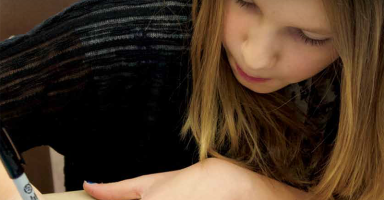Art and Aesthetics
About This Issue

The study and practice of the arts can serve as a powerful vehicle for learning. This issue presents ways that the arts can deepen intellectual inquiry as well as sparking creativity, engage students' hearts and minds in science, literature, and all aspects of Jewish studies, expose learners to provocative, contemporary issues of culture and politics, and draw meaningful connections across the curriculum and among people.
Click here to download the PDF and printer friendly version of this issue of HaYidion.
Articles From This Issue
Image

AI and Tech
Fall 2023
Image

Relationships
Spring 2023
Image

Affordability
Fall 2022
Image

Value Proposition
Spring 2022
Image

Organizational Memory
Fall 2021


